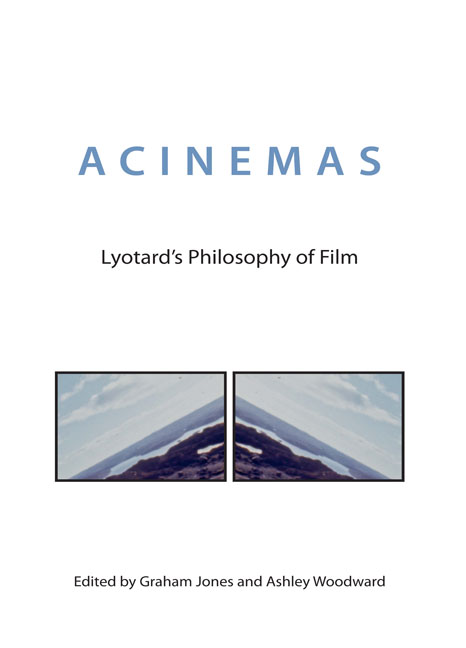Book contents
- Frontmatter
- Contents
- Acknowledgements
- Abbreviations
- Translators’ Note
- I Openings
- II Lyotard's Essays on Film
- 4 Acinema
- 5 The Unconscious as Mise-en-scène
- 6 Two Metamorphoses of the Seductive in Cinema
- 7 The Idea of a Sovereign Film
- III Approaches and Interpretations
- IV Applications and Extensions
- Appendices
- Notes on Contributors
- Index
5 - The Unconscious as Mise-en-scène
from II - Lyotard's Essays on Film
Published online by Cambridge University Press: 23 June 2018
- Frontmatter
- Contents
- Acknowledgements
- Abbreviations
- Translators’ Note
- I Openings
- II Lyotard's Essays on Film
- 4 Acinema
- 5 The Unconscious as Mise-en-scène
- 6 Two Metamorphoses of the Seductive in Cinema
- 7 The Idea of a Sovereign Film
- III Approaches and Interpretations
- IV Applications and Extensions
- Appendices
- Notes on Contributors
- Index
Summary
First of all, I should make clear what I mean by the word ‘mise-en-scène’. ‘Mettre en scène’ (to stage) is to transmit signifiers from a ‘primary’ space to another space, which is the auditorium of a theatre, cinema, or any related art. I offer a classic example: one evening, at the Paris Opera, we are listening to Der Rosenkavalier, by Richard Strauss. This is a ‘performance’; of what is it made? Singer-actors on stage, musicians in the orchestra pit, stage-hands and light crew in the wings, all are following a large number of prescriptions. Some of these are inscribed in certain documents: the libretto by Hoffmanstahl, the score by Richard Strauss. Others can be solely oral, from the director Rudolf Steinbock – as in stage directions for the actors or directions for the lighting and scenery. This simplified example enables us to distinguish three different phases of the staged work.
The final phase is the performance we are attending. It consists of a group of stimuli– colours, movements, light, sounds. This ensemble which besieges our sensory body ‘tells’ it a story – in this example, the story of Der Rosenkavalier. The performance steers us along a course composed of a series of audible intensities, timbres and pitches; of sentences and words arranged according to expert rhetoric; and of colours, intensities of light, etc.
The initial phase of the work (but is it a work at this point?) is characterised by the heterogeneity of the arts which will be used to put the performance together: a written drama, a musical score, the design of the stage and auditorium, the machinery at the disposal of the theatre, etc. We have here groups of signifiers forming so many messages, or constraints in any case, belonging to different systems: the rules of the German (or better, Austrian) language, the rules of the prevalent rhetoric, and those prevailing in Hoffmanstahl's writing on the one hand; and on the other hand, the constraints of musical composition and Strauss’ own relation to those constraints, etc.; nevertheless, even in this initial phase, there is something which limits the disorder that could result from such a heterogeneity – this is the single reference imposed on all the messages which make up the work: the story of Der Rosenkavalier itself.
- Type
- Chapter
- Information
- AcinemasLyotard's Philosophy of Film, pp. 43 - 54Publisher: Edinburgh University PressPrint publication year: 2017



